Nov 2, 2013 | BEP, coins, currency, legislative, policy, US Mint
Believe it or not, there was a little business actually being done by the congress other than the partisan bickering.
H.R. 3305 Currency Optimization, Innovation, and National Savings Act
Sponsor: Rep. Michael Fitzpatrick (R-PA)
• To improve the circulation of $1 coins, to remove barriers to the circulation of such coins.
• Introduced: October 22, 2013
• Referred to the House Committee on Financial Services
Track this bill at http://www.govtrack.us/congress/bills/113/hr3305
Oct 3, 2013 | coins, commemorative, legislative, policy, US Mint
H.R. 3146: Savings, Accountability, Value, and Efficiency (SAVE) II Act
Sponsor: Rep. Patrick Murphy (D-FL)
• To take steps to reduce the deficit of the Federal Government.
• Sec. 8. Prohibition On Non-Cost Effective Minting and Printing Of Coins and Currency
• Introduced: September 18, 2013
• Referred to many committees including the Committee on Ways and Means
Track this bill at http://www.govtrack.us/congress/bills/113/hr3146
H.R. 3186: Hank Aaron Congressional Gold Medal Act
Sponsor: Rep. Ron Kind (D-WI)
• To award a Congressional Gold Medal to Hank Aaron, in recognition of his contributions to the national pastime of baseball and his perseverance in overcoming discrimination and adversity to become a role model for all Americans.
• Introduced: September 26, 2013
• Referred to the House Financial Services Committee
Track this bill at http://www.govtrack.us/congress/bills/113/hr3186
I usually do not include bill for congressional gold medals. As a fan of Hank Aaron, I am including it to show my support. If congress should ever get its act together, it would be nice if they would immediately pass this by unanimous consent.
Sep 30, 2013 | BEP, coins, currency, Federal Reserve, news, policy, US Mint
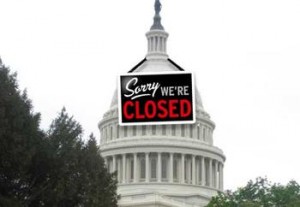 In the ongoing drama that is United States Federal government, a shutdown is looming over the shear idiocy of idiot-loges on both sides of the aisle attempting the rule and not govern. All 537 politicians elected to federal office are in need of a good spanking.
In the ongoing drama that is United States Federal government, a shutdown is looming over the shear idiocy of idiot-loges on both sides of the aisle attempting the rule and not govern. All 537 politicians elected to federal office are in need of a good spanking.
First, here are some impacts:
- According to the Office of Management and Budget, a government shutdown will cost taxpayers an extra $40-60 million per day.
- The District of Columbia is reporting that a shutdown will cost the city about $2 million per day in lost revenues.
- Maryland and Virginia has not reported their potential economic impact of a shutdown.
- UPDATE (4:40pm): Local news reports say that over 835,000 workers will be effected by a shutdown with at least 80-percent being in the Washington, D.C. metropolitan area. Some estimates are saying that it could cost the region up to $20 million per day.
What does this mean for the money manufacturing bureaus of the country?
- The U.S. Mint is not answering inquiries about pending shutdown. Media is directed to contact OMB for more information.
UPDATE (1:40pm): The U.S. Mint will not allow tours of the Philadelphia and Denver mints during a government shutdown.
- Office of Management and Budget is not answering the telephone. Rather, they requested that an email be sent with detailed questions. Email inquiries have yet to be answered.
- When calling the Bureau of Engraving and Printing, their phone is either busy or when trying to get past the voice response system for the Office of External Relations, the system says “the person you attempted to reach is unavailable.” An email was sent to the BEP’s general inquiry account and OMB asking about the operations at the BEP.
UPDATE (3:30pm): An email note was received from the BEP saying to contact a spokesperson at the Department of the Treasury. Telephone and email messages have not been returned.
UPDATE (4:10pm): Both the Washington and Fort Worth plants will not hold tours if there is a government shutdown at midnight tonight.
- Since the Federal Reserve is an independent organization and not subject to congressional appropriations, they will remain open during a shutdown. The shutdown will not affect the launch of the new $100 Federal Reserve Note planned for October 8.
UPDATE (5:30pm): According to the Treasury Department:
Operations of the following bureaus are funded from sources other than annual Congressional appropriations, and would operate normally if a government shutdown were to occur: the Office of the Comptroller of the Currency (OCC), the United States Mint, and the Bureau of Engraving and Printing (BEP).
This post will be updated as new information is provided.
Representatives of these agencies may contact me via email to provide additional information. Please note that I do respect the confidentiality of sources!
NOTE: I am not a member of any political party. I am a proponent of government employees who do not deserve the way they are being treated by the elected officials.
Sep 6, 2013 | coins, commemorative, legislative, policy, US Mint
H.R. 2932: United States Coast Guard Commemorative Coin Act
Sponsor: Rep. Joe Courtney (D-CT)
• To require the Secretary of the Treasury to mint coins in commemoration of the United States Coast Guard.
• Introduced: August 1, 2013
• Referred to the House Committee on Financial Services
Track this bill at http://www.govtrack.us/congress/bills/113/hr2932
Aug 2, 2013 | coins, commemorative, legislative, policy, US Mint
H.R. 2633: Thirteenth Amendment Commemorative Coin Act
Sponsor: Rep. Danny Davis (D-IL)
• To require the Treasury to mint coins in commemoration of the Sesquicentennial Anniversary of the adoption of the Thirteenth Amendment to the United States Constitution, which officially marked the abolishment of slavery in the United States.
• Introduced: July 9, 2013
• Referred to the House Committee on Financial Services
Track this bill at http://www.govtrack.us/congress/bills/113/hr2633
H.R. 2754: Collectible Coin Protection Act
Sponsor: Rep. George “G.K.” Butterfield, Jr. (D-NC)
• To amend the Hobby Protection Act to make unlawful the provision of assistance or support in violation of that Act
• Introduced: Jul 19, 2013; Referred to House Energy and Commerce Committee
• Passed in the House of Representatives: Jul 30, 2013 (voice vote)
• Received in the Senate: July 31, 2013; Referred to Senate Committee on Commerce, Science, and Transportation
Track this bill at http://www.govtrack.us/congress/bills/113/hr2754
H.R. 2760: Panama Canal and Pan-Pacific Exhibition Centennial Celebration Act
Sponsor: Rep. Nancy Pelosi (D-CA)
• To require the Secretary of the Treasury to mint coins in commemoration of the centennial of the Panama-Pacific International Exposition and the Panama Canal
• Introduced: July 19, 2013
• Referred to the House Committee on Financial Services
Track this bill at http://www.govtrack.us/congress/bills/113/hr2760
Jul 29, 2013 | bullion, coins, commemorative, nclt, policy
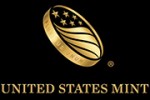 Last March, three members of the Citizens Coinage Advisory Committee met with Rep. Andy Barr (R-KY), a freshman member of the House Financial Services Committee that oversees the U.S. Mint, to pitch the idea of Liberty-themed coins.
Last March, three members of the Citizens Coinage Advisory Committee met with Rep. Andy Barr (R-KY), a freshman member of the House Financial Services Committee that oversees the U.S. Mint, to pitch the idea of Liberty-themed coins.
Initially, the proposal was to issue a series of Liberty-themed coins for the five silver-colored circulating coins but dropped the 5-cent coins after Barr said that there must be no cost to the taxpayer. Currently, the U.S. Mint reports that it costs 10.9-cents to produce the Jefferson nickel and was removed from discussion. What the politicians fail to grasp is that coin production does not cost the U.S. taxpayer anything because all of the money used to operate the U.S. Mint comes from the seigniorage collected on all coins, commemoratives, and tokens sold including circulating coinage to the Federal Reserve. Since the Federal Reserve does not use taxpayer money in its operation, the purchase of circulating coins generates a profit for the government.
Although removing the 5-cent coins from consideration is a wise political move, it demonstrates the illogic and dysfunction of the politics. It also illustrates why the current system of how congress controls the U.S. Mint is unsustainable and needs to be changed.
No other mint in the world is under the same legislative control as the U.S. Mint. Every other major mint are autonomous entities running under the authority of the government required to produce circulating coinage for the country’s central bank and must obtain approval from the central bank to create any legal tender coin. A government can decide that it should produce certain denomination or stop producing a denomination and the autonomous entity must comply.
People who want to discontinue the use and production of the one-cent coin looks to Canada as an example of how a country to stop producing their lowest denomination and be successful. While it is too soon to judge the success and failure of this move, what is lost on people is how the Royal Canadian Mint, a Crown corporation of Canada, is required to comply with the laws passed by the Canadian Parliament. If the Canadian Parliament passes a law that says the Royal Canadian Mint is not to produce any more one-cent coins, than the Royal Canadian Mint does not produce one-cent coins.

The 2004 Poppy Quarter was the Royal Canadian Mint’s first colorized circulating coin.
Nearly every mint operates in the same manner. while the Royal Mint is more conservative in their issues, the Perth Mint, the Mint of Poland, and Austrian Mint operate in a similar manner.
Some countries do not operate a mint even as a public corporation. Countries like Niue, Somalia, and Isle of Man that have produced popular NCLT issues contract their minting to other mints, such as the New Zealand Mint, or to private corporations like the family-owned Pobjoy Mint. Even the government of Israel thought it was best to privatize their mint. After being established in 1958 by then Prime Minister David Ben-Gurion, the Israel Coins & Medals Corp was privatized and sold in 2008 where they continue to operate under the authority of the Israeli government and the Bank of Israel.

2007 Somalia Motorcycle Non-circulating Legal Tender Coins
Those who would be against privatizing the U.S. Mint immediately point to Article I, Section 8 of the U.S. Constitution that says “The Congress shall have Power… To coin Money, regulate the Value thereof,” as the reason not to privatize the U.S. Mint. While the Constitution gives congress this authority, it does not say that the government has to own the means of production nor does it say that congress has to dictate the design of that money. In its most basic term, “to coin money” means to authorize production of and make legal tender of coins used in commerce (for a full description based on case law, see this section).
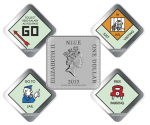
2013 Niue Monopoly Coins struck by the New Zealand Mint. Is this too much?
In a huff, those who argue against government-owned corporation point to Freddie Mac and Fannie Mae as examples of the dangers of making critical government functions private. Unfortunately, these people are reading the headlines and not the reasons for Freddie and Fannie’s problems caused by the recent fiscal crisis. While both companies can be blamed for their parts in the failure of the markets, a lot of their blame can be traced to the laws that congress passed giving them a complicated deregulated environment from which to try to accomplish their goals. Rather than find a way to fix the issues, congress wants to end the programs Freddie and Fannie support and close those entities even though new regulations have been working.
The problem with making the U.S. Mint a government-owned corporation would be the 535 member board of directors (congress) whose knowledge of what it would take to do this right is suspect. This is the same congress that has forced the Postal Service to over pay into its pension fund while forgetting that it has to the power “to pay the Debts and provide for the common Defence and general Welfare of the United States” by shutting down the government or preventing the payment of debt by manipulating the artificial debt ceiling.
It would be possible to make the U.S. Mint a government-owned corporation using the lessons learned from the governance of the Postal Service, Fannie Mae, Freddie Mac, and any number of other world mints. A charter would be established to make the government-owned Mint corporation the sole provider of circulating coins to the federal reserve and that its operations would be managed by a board with representation from the executive branch, legislative branch, and the Federal Reserve. The board would have oversight power over the Mint corporation and work within the parameters set up by the charter.
Provisions of the charter would be that congress would regulate coinage in that nearly every part of 31 U.S.C. § 5112 would be eliminated except for paragraph (a) that describes the denominations and their size specifications. All laws regarding weights, composition, and design with the exception of the first sentence of paragraph (d), would be eliminated.

2013 American Eagle West Point Two-Coin Silver Set with reverse proof and enhanced uncirculated coins.
A new charter would allow congress to designate two commemorative coins per year with a surcharge to be paid to an organization as it does today, but the Mint corporation could create additional non-circulating legal tender coins with its own designs that are made legal tender by following the specifications of the law (e.g., 31 U.S.C. § 5112(a)(10) allows for “A five dollar gold coin that is 16.5 millimeters in diameter, weighs 3.393 grams, and contains one-tenth troy ounce of fine gold.”) and approved by the design board, the Mint charter board, and the Federal Reserve.
The design board would be the Citizens Coinage Advisory Committee. Rather than have two design groups, one that whose purpose outside of reviewing coins is to review architecture, only the CCAC would continue as the approved design board. This way, the Mint corporation would have artistic oversight by a dedicated organization and not have to worry about whether the U.S. Commission of Fine Arts, whose purpose is to oversee the architecture of Washington, understands design and the issues with striking those designs.
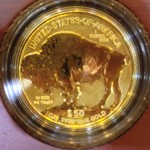
We should keep the 24-karat gold Buffalo coins, too!
Freeing the U.S. Mint to be more autonomous and provide them the ability to create new products will not cost the taxpayer anything. In fact, it has the potential for the new corporation to earn more than it does now with new products on the market because if you notice, I never said to get rid of the U.S. Mint Public Enterprise Fund (31 U.S.C. § 5136). On the contrary, the new Mint corporation should be required to set an operations budget and leave the budget plus 25-percent in the Public Enterprise Fund for emergencies. The rest should be deposited in the account of the company’s shareholders: the General Treasury of the United States of America.
In this scenario, it will not matter that it costs more than face value to manufacture the cent and 5-cent coins. The losses can be made up by selling other products to a world that trusts the U.S. Mint—a world that buys more bullion and collectibles from the U.S. Mint than any other country. Imagine how much the new Mint corporation could help reduce the deficit if allowed to be run more like a commercial enterprise than an over regulated government agency.
If it is said that the private sector can do better than the government, here is one way to put that rhetoric to a test!
Today’s Poll
What do you think? In addition to writing a comment below, how about participating in a poll. Do you think that the U.S. Mint should become a government-owned corporation?

Loading ...
U.S. Mint logo courtesy of the
U.S. Mint.
Image of the 2004 Canadian Poppy Quarter courtesy of
Talisman Coins.
2013 Niue Monopoly Coin images courtesy of the
New Zealand Mint.
All other images are property of the author.
Jul 22, 2013 | coins, dollar, legislative, policy

Dollar Coin Alliance
The COINS Act is designed to eliminate the $1 federal reserve note from circulation by increasing the circulation of coins and reducing the circulation of the paper currency over three years. At the end of three years, the Federal Reserve will not be allowed to distribute the $1 not. The bill does allow the Bureau of Engraving and Printing to continue to distribute the $1 note as a collectible for numismatists.
The bill was introduced by Sen. Tom Harkin (D-IA) and co-sponsored by Sens. John McCain (R-AZ), Tom Coburn (R-OK), Mike Enzi (R-WY) and Mark Udall (D-CO). It supports the GAO reports that suggest the potential savings of using the coin over paper will be $13 billion.
If you are in the Washington, DC area and what to talk about the COINS Act, the briefing will be held a noon at the Russell Senate Office Building in Room 385. Attending the briefing for the Council for Citizens Against Government Waste and The Dollar Coin Alliance:
- Aaron Klein, Former Chief economist for the Senate Banking Committee and Deputy Assistant Secretary of the U.S. Treasury
- William Christian, Director of Government Affairs, The Council for Citizens Against Government Waste
- Former Congressman Jim Kolbe (R-AZ), Honorary Co-Chair of the Dollar Coin Alliance
If you cannot attend the briefing, take the opportunity to contact your senators to let them know how you feel about the bill.
Logo courtesy of the Dollar Coin Alliance.
Jul 7, 2013 | BEP, currency, Federal Reserve, policy
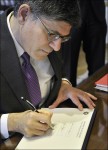 In one of those news items from while I was away, Secretary of the Treasury Jacob J. “Jack” Lew put pen to official paper and provided an autograph that will appear on United States Federal Reserve Note. Treasury reports that Lew’s signature will first appear on Series 2013 five-dollar notes that will be issued this fall. No plans were announced for other denominations.
In one of those news items from while I was away, Secretary of the Treasury Jacob J. “Jack” Lew put pen to official paper and provided an autograph that will appear on United States Federal Reserve Note. Treasury reports that Lew’s signature will first appear on Series 2013 five-dollar notes that will be issued this fall. No plans were announced for other denominations.
Lew, whose autograph has been called “lewpty” and been compared to the decorative icing on a Hostess cupcake, made a promise to the president that he would do better with his penmanship. During his confirmation hearing, Lew told Sen. Max Baucus (D-MT), Chairman of the Senate Finance Committee, that he promised the president he would do better. This did not satisfy those with an ironic sense for the different when a petition appeared on the White House website to “Save the Lewpty-Lew.”
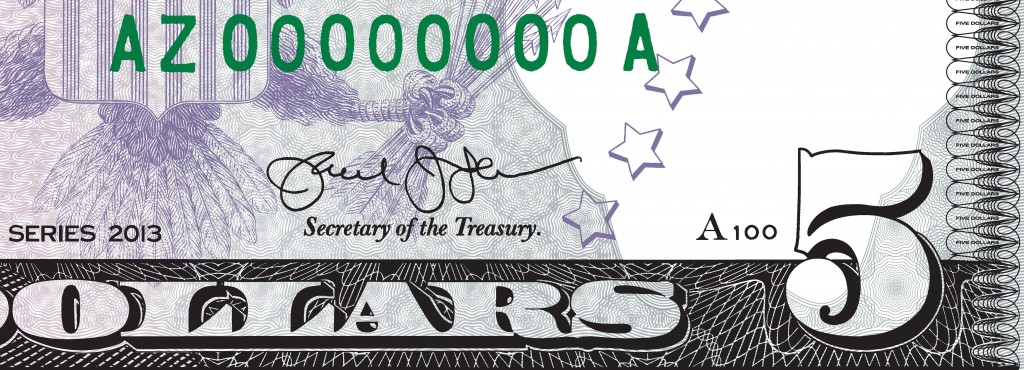
Mock-up of how Treasury Secretary Jack Lew’s autograph will appear on the Series 2013 $5 Federal Reserve Note in the Fall.
Remember as you were growing up spending time with a piece of paper practicing your signature? I wonder if Lew was doing this in his spare time?
While Lew’s autograph lost many of his infamous lewpts at least he did not go to the extreme that of predecessor, Tim Geithner. Geithner’s autograph was very readable and lacked character. At least Lew kept some of his lewpts. It will make for interesting conversations for currency collectors in the future as they examine the autographs on their collectibles.
Images courtesy of the U.S. Department of the Treasury.
Jul 2, 2013 | coins, legislative, policy
S. 1105: Currency Optimization, Innovation, and National Savings Act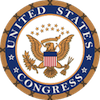
Sponsor: Sen. Tom Harkin (D-IA)
• To improve the circulation of $1 coins, to remove barrier to the circulation of such coins
• Introduced: June 6, 2013
• Referred to the Senate Committee on Banking, Housing, and Urban Affairs
Track this bill at http://www.govtrack.us/congress/bills/113/s1105
S. 1158: National Park Service 100th Anniversary Commemorative Coin Act
Sponsor: Sen. Mark Warner (D-VA)
• Introduced: June 13, 2013
• Referred to the Senate Committee on Banking, Housing, and Urban Affairs
Track this bill at http://www.govtrack.us/congress/bills/113/s1158
H.R. 2366: World War I American Veterans Centennial Commemorative Coin Act
Sponsor: Rep. Doug Lamborn (R-CO)
• Introduced: June 13, 2013
• Referred to the House Committee on Financial Services
Track this bill at http://www.govtrack.us/congress/bills/113/hr2366
Jun 9, 2013 | coins, counterfeit, legislative, policy
Following the failure of the House of Representatives to even consider the Collectible Coin Protection Act in the 112th Congress (H.R. 5977), Representative Lamar Smith (R-TX) kept his promised and re-introduced the bill into consideration for the 113th Congress. On May 7, 2013, H.R. 1849 was assigned to the House Energy and Commerce Committee. The bill was introduced two days before the National Money Show, the current co-sponsors are Reps. Bill Cassidy (R-LA), Steve Scalise (R-LA), and Henry Waxman (D-CA). Fred Upton (R-MI) is the Chairman of the Energy and Commerce Committee and Waxman is the Ranking Member. Both Cassidy and Scalise are members of that committee.
The bill is exactly the same as H.R. 5577 that was introduced late in the 112th congress.
Rep. Steve Scalise is a new addition to this bill. He represents Louisiana’s 1st District that covers an area north and to the west of New Orleans that includes Metarie and Slidell. Scalise attended a reception at the National Money Show where he expressed his commitment to see the bill pass.
Scalise is the newly elected chairman of the Republican Study Committee (RSC), a caucus of House Republicans “organized for the purpose of advancing a conservative social and economic agenda in the House of Representatives.” In an interview during the National Money Show reception, Scalise said that would be H.R. 1849 an effective tool to help the hobby and since it is revenue neutral, he will recommend it to the 174 members of the RSC.
Currently, the Hobby Protection Act (15 U.S.C. §§2101-2106 and 16 CFR 304) does not allow for enough protection for the buyer. Aside from requiring the word “COPY” to appear on a copy, it does not allow for buyers or the government to take action against resellers, only the manufacturers.
When the Hobby Protection Act was first enacted in 1973 and updated in 1988, the online world did not exist the way it does today. It was easier to trace the manufacturers and the overseas sellers than the distribution channels are today. By the time a counterfeit coin reaches the United States, it could have been bought and purchased several times before being noticed. Then there is no remedy for those who have been duped.
Another problem is that the counterfeiters are learning to counterfeit slabs. Both NGC and PCGS have seen their slabs counterfeited or altered holding counterfeit coins. Both NGC and PCGS have the same problems with trying to protect their brands against counterfeiters.
The introduction of the bill is the result of the work of the Industry Council for Tangible Assets (ICTA) and Gold and Silver Political Action Committee (GSPAC), and the numismatic community working with key representatives to craft an effective legislation. It is also written to ensure support from congress. Benefits of the new law are as follows:
- Include the distribution and sale of items not properly marked as being a COPY
- Expands the provisions to include “any person who provides substantial assistance or support to any manufacturer, importer, or seller” who knowingly engages in any act or practice that violates the Act;
- Expands the ability for those who were sold counterfeit items to include the counterfeiter, their agent in the United States, or anyone who knowing “transacts business” in violation of this Act;
- Extend trademark violations and remedies to help third-party certification services protect against counterfeit holders.
These new provisions will allow collectors, dealers, and grading services to bring legal actions that are much more effective, with much stronger remedies than previously existed. It will allow those harmed to work with the Justice Department to bring criminal actions, where apporpriate.
WE STILL NEED YOUR HELP
The only way to ensure that H.R. 1849 becomes law, especially since we are approaching the end of this session in an election year, is to contact your member of congress will let them know that the numismatic community supports this Act and that their support is important.
To contact your representatives, visit house.gov and enter your Zip Code at the top right of the page. When you contact your representative, you should mention that H.R. 1849 is revenue neutral and will not require additional appropriations. The bill will go a long way in combating counterfeit rare coins in the marketplace, saving collectors and investors millions of dollars in fraudulent transactions.
To read a copy of the bill and to track its progress, you can use govtrack.us. Sign up for a free account then visit this link for information about this bill and how to track its progress.
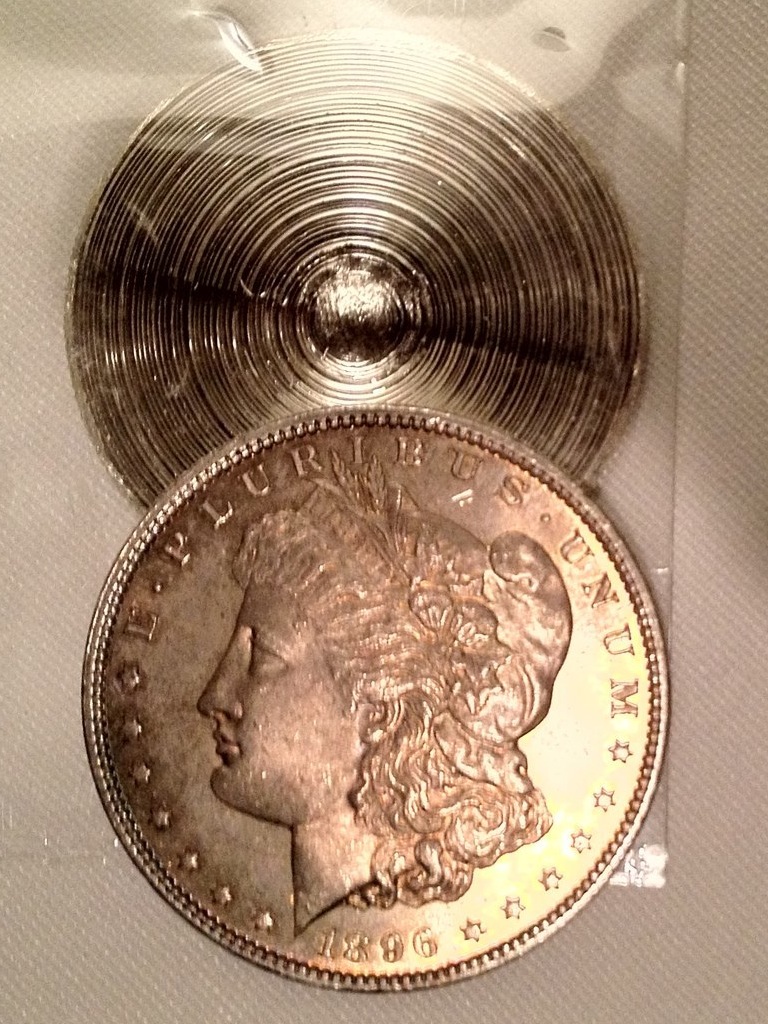
An example of a Morgan Dollar cut in half to match a date with a mintmark to have the coin appear something it is not. Coin was in a counterfeit PCGS slab and caught by one of their graders.
DISCLAIMER: I am working as Political Coordinator for the Gold and Silver PAC.












